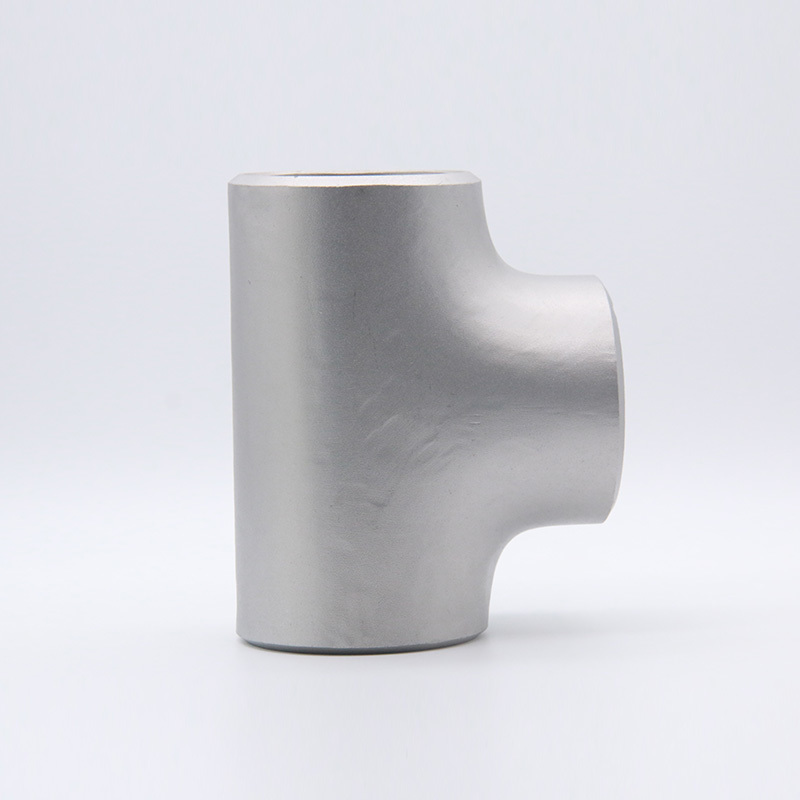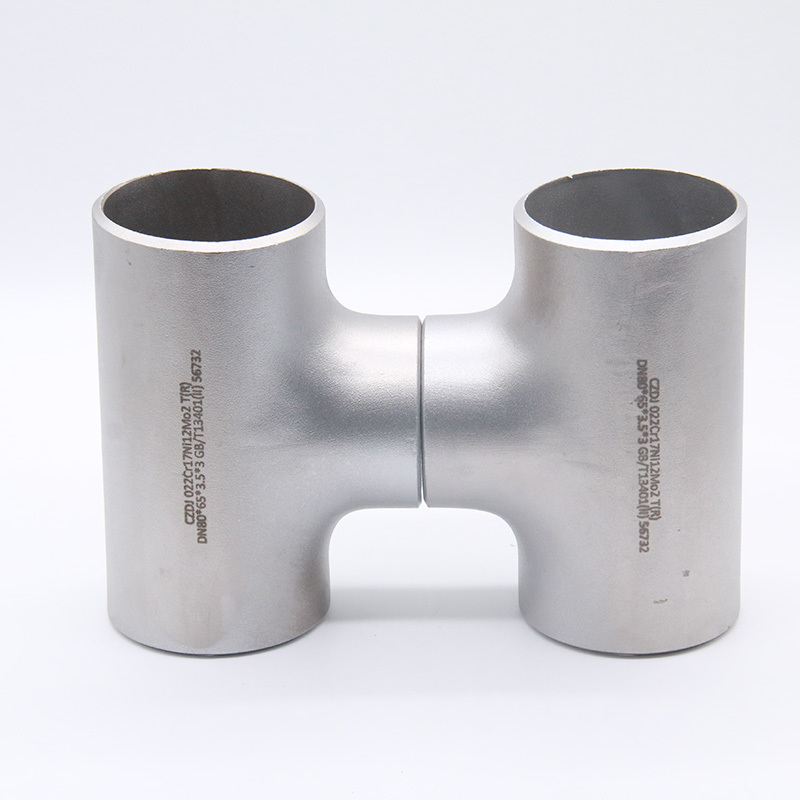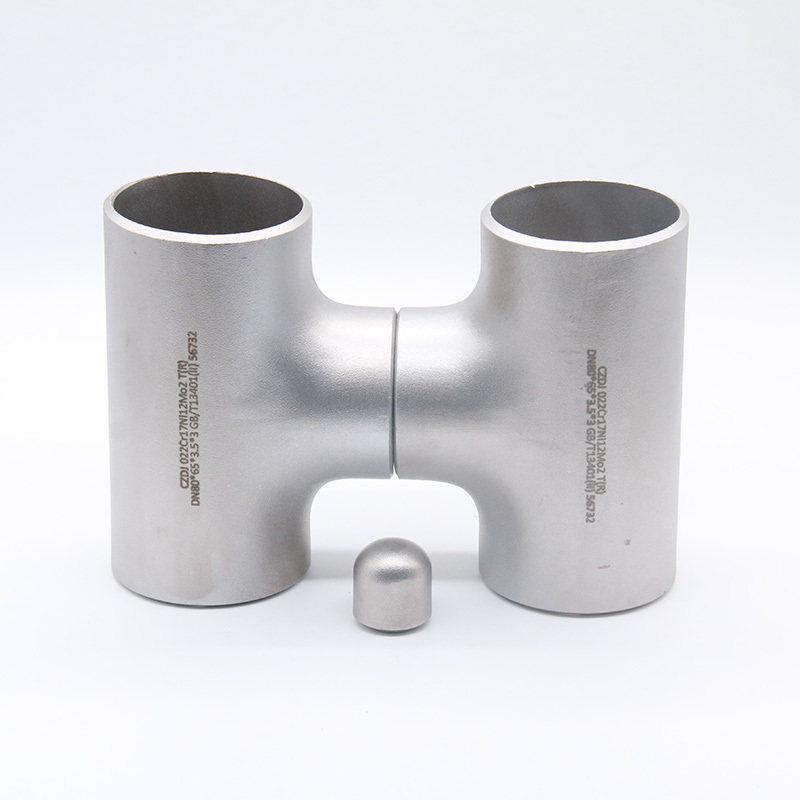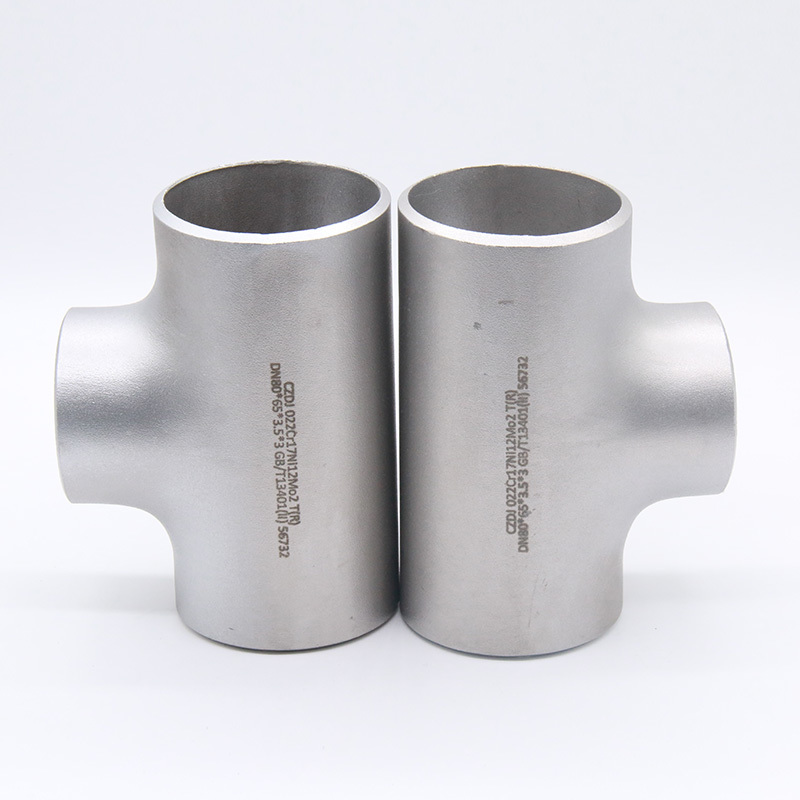TEE
Key Word:
Category:
Products Detial
| Specifications | ASTM A234/ ASME SA234/ROCT10#/20#/Q235 |
| Dimension | ASME/ ANSI B16.9 | ASME B16.28 |JIS Standards |GOST Standards... |
| Thickness of Fitting | SCH 10, SCH20, SCH 30, STD SCH 40, SCH 60, XS, SCH80, SCH100, SCH 120, SCH 140, SCH160, XXS available with NACE MR 01-75 |
| Types | Seamless | Welded |
| Bending Radius | R= 1D, 1.5D, 2D, 3D, 6D ... |
| Size Range | Sesmless Pipe Fittings Size Range: 1/2"---24" DN15---DN600mm Welding Pipe Fittings Size Range: 1/2"---80" DN15---DN2000mm Thickness:2mm-60mm |
| Market of World | Russia,European,South America,Southeast Asia,South Africa,Middle East ... |
| Manufacturer of Range | Pipe Cap, Tees, Reducers, 45 degree Elbow, 90 degree Elbow,180 degree Elbow,Pipe Bend, Crosses, 90º Elbow,buttweld fittings customed |
Product description
Tee for pipe fittings, pipe connectors. Also called tee or tee pipe fittings, tee joint, used in the main pipe to branch pipe.
Introduction of Tee:
Tee also known as pipe fittings tee or tee pipe fittings, tee joint, etc. Used mainly to change the direction of the fluid, used in the main pipe branch. It can be classified by pipe size. Generally made of carbon steel, cast steel, alloy steel, stainless steel, copper, aluminum alloy, plastic, argon, pvc and other materials.
Three-way concept interpretation:
Tee for pipe fittings, pipe connectors. Also called tee or tee pipe fittings, tee joint, used in the main pipe to branch pipe.
A tee has three openings, namely one inlet and two outlet; Or a chemical pipe fitting with two inlet and one outlet, T shape and Y shape, equal diameter pipe mouth, and also reduced diameter pipe mouth, used for three same or different pipe convergence. The main function of the tee is to change the direction of the fluid.
Classification of tee:
Divided by pipe diameter size
The nozzle end of the equal diameter tee is the same size;
The main pipe size of the reduced tee is the same, and the tube size of the branch pipe is smaller than the main pipe size.
Division by process
1. Hydraulic expansion
Hydraulic expansion of tee is a forming process in which the branch pipe is expanded by axial compensation of metal material. The process is to use a special hydraulic press, and the diameter of the three tube billet into the liquid, through the hydraulic press two horizontal cylinder synchronous movement extrusion tube billet, tube billet after the extrusion volume becomes smaller, the liquid in the tube billet with the volume of the tube billet becomes smaller and the pressure rises, when the three tube branch pipe expansion required pressure, Under the double action of the liquid pressure in the side cylinder and the blank, the metal material flows along the inner cavity of the die and expands the branch pipe.
The hydraulic expansion process of tee can be formed in one time, and the production efficiency is higher. Tee head and shoulder wall thickness have increased.
Due to the large tonnage required by the hydraulic bulging process of seamless tee, it is mainly used in the manufacture of tee with standard wall thickness less than DN400 in China. Its suitable forming materials for cold work hardening tendency is relatively low low carbon steel, low alloy steel, stainless steel, including some non-ferrous materials, such as copper, aluminum, titanium and so on.
2. Hot press forming
Three-way hot pressing is to flatten the blank of the tube larger than the diameter of the tube to the size of the diameter of the tube, and open a hole in the part of the stretching branch pipe; The tube blank is heated and put into the forming die, and the tube blank is loaded into the drawing branch die; Under the action of pressure, the blank tube is compressed radially. In the process of radial compression, the metal flows in the direction of the branch tube and forms the branch tube under the tension of the die. The whole process is formed by radial compression of the billet and tensile process of the branch pipe. Different from the hydraulic expansion tee, the metal of the hot-pressed tee branch pipe is compensated by the radial motion of the tube blank, so it is also called radial compensation process.
Due to the use of heating after pressing tee, material forming required equipment tonnage is reduced. Hot pressing tee has wide adaptability to materials, suitable for low carbon steel, alloy steel, stainless steel materials; Especially for tee with large diameter and thicker wall, this forming process is usually adopted.
The tee is divided by material:
Carbon steel, cast steel, alloy steel, stainless steel, copper, aluminum alloy, plastic, argon, pvc, etc.
Three ways are divided by production method:
Pushing, pressing, forging, casting, etc.
Tees are divided by manufacturing standards:
National standard, electrical standard, chemical standard, water standard, American standard, German standard, Japanese standard, Russian standard, etc. The details are as follows :GB/T12459-2005,GB/T13401-2005,ASME B16.9,SH3408,SH3409-96,SH3410-96,HG/T21635,DL/T 695,SY/T 0510,DIN 2615.
Company Show

Previous:
Next:
Related Products
Product Inruiry
Please fill in the form to get more information as soon as possible









